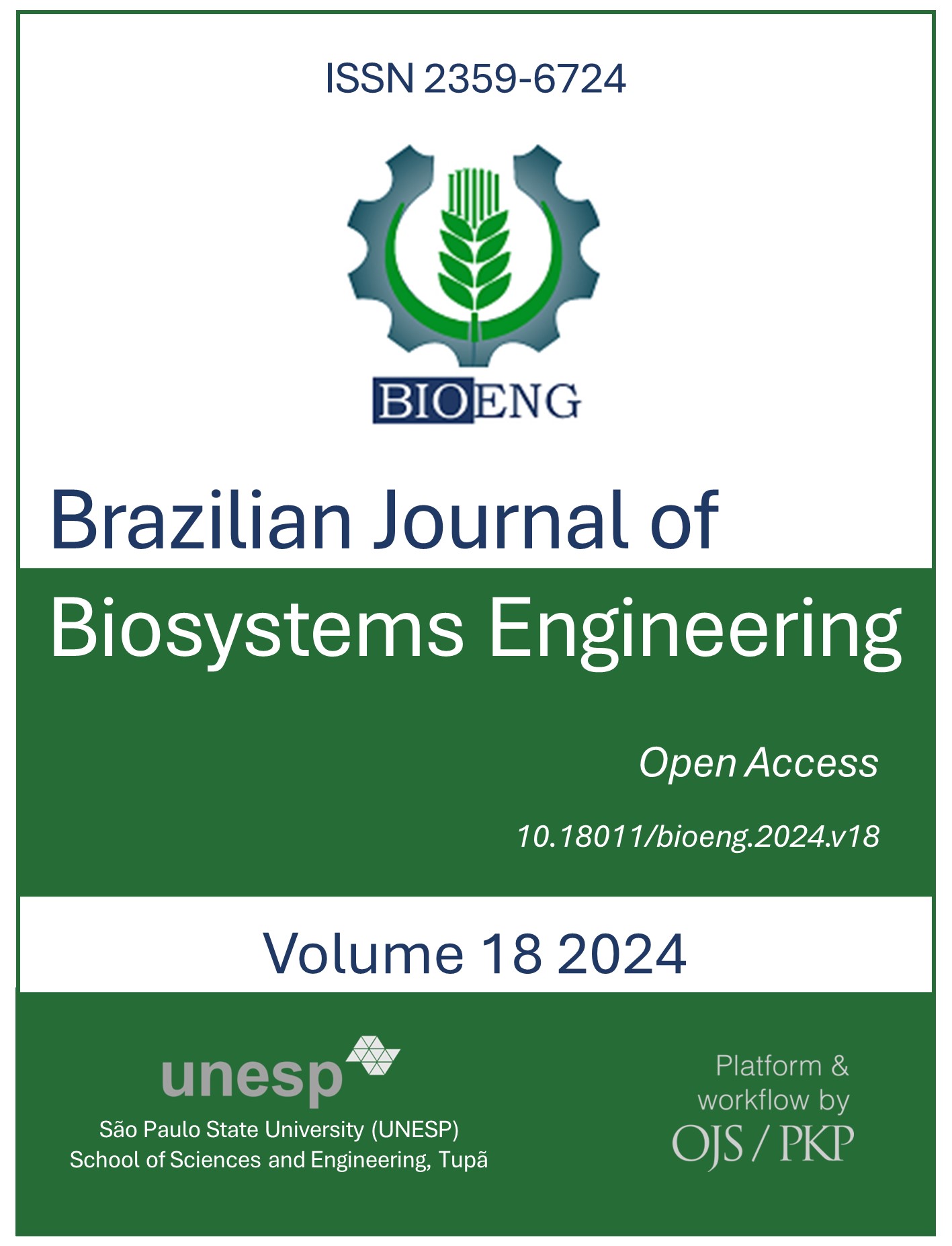Sugarcane expansion in the microregion of Araraquara: a shift-share analysis
DOI:
https://doi.org/10.18011/bioeng.2024.v18.1238Palavras-chave:
Araraquara, Sugarcane, Land cover change, Shift-shareResumo
Sugarcane is one of the main crops in Brazilian agribusiness, covering a vast planted area that expands annually. Based on this, it is important to understand how the dynamics of this expansion occurred, to visualize whether there was the replacement of other crops or the incorporation of new areas. The objective of this research, therefore, was to analyze the sugarcane expansion by changes in land use. To this end, the shift-share method was applied, which, assuming a proportionality in the change in land use, allowed visualizing the main crops that incorporated and lost land, both in terms of planted area and new areas. Sugarcane was the main crop that incorporated land, but it was followed by soybeans, peanuts, and cassava. All other crops grown in the region lost land, including oranges, a traditional and important crop in the region. This may be due to more stability on returns of sugarcane and disease in the orange fields. There was also a reduction in the pastureland, which may be caused by competition with more intensive use of the land by some crops, such as sugarcane, and cheaper land in the northern region of the country. The results can contribute to the formulation of public and private policies regarding land use management.
Downloads
Referências
CNA. (2024). Boletim do Comércio Exterior do Agronegócio. https://cnabrasil.org.br/publicacoes/boletim-do-comercio-exterior-do-agronegocio-janeiro-2024
CONAB. (2024). Boletim da Safra de cana-de-açúcar. https://www.conab.gov.br/info-agro/safras/cana/boletim-da-safra-de-cana-de-acucar
Freitas Junior, A. M. de, & Barros, P. H. B. de. (2021). A expansão da pecuária para a Amazônia legal: externalidades espaciais, acesso ao mercado de crédito e intensificação do sistema produtivo. Nova Economia, 31(1), 303–333. https://doi.org/10.1590/0103-6351/5064 DOI: https://doi.org/10.1590/0103-6351/5064
Fundecitrus. (2023). Levantamento da incidência das doenças dos citros. Fundecitrus. https://www.fundecitrus.com.br/levantamentos
Guevara, A., Silva, O., Hasegawa, H., & Venanzi, D. (2017). Evaluation of Sustainability of Brazilian Ethanol Production: A model in System Dynamics. Brazilian Business Review, 14(4), 435–447. https://doi.org/10.15728/bbr.2017.14.4.5 DOI: https://doi.org/10.15728/bbr.2017.14.4.5
IBGE. (2019). Censo Agropecuário 2017. IBGE. https://biblioteca.ibge.gov.br/index.php/biblioteca-catalogo?view=detalhes&id=73096
IBGE. (2021). Produto Interno Bruto dos Municípios. https://sidra.ibge.gov.br/pesquisa/pib-munic/tabelas
IBGE. (2023a). Produção Agrícola Municipal. https://sidra.ibge.gov.br/pesquisa/pam/tabelas
IBGE. (2023b). Produção da Pecuária Municipal. https://sidra.ibge.gov.br/pesquisa/ppm/quadros/brasil/2023
IBGE. (2024). Produção Agropecuária: cana-de-açúcar. https://www.ibge.gov.br/explica/producao-agropecuaria/cana-de-acucar/br
Lourenzani, W. L., & Caldas, M. M. (2014). Mudanças no uso da terra decorrentes da expansão da cultura da cana-de-açúcar na região oeste do estado de São Paulo. Ciência Rural, 44(11), 1980–1987. https://doi.org/10.1590/0103-8478cr20140186 DOI: https://doi.org/10.1590/0103-8478cr20140186
Teixeira, J. C., & Hespanhol, A. N. (2015). A TRAJETÓRIA DA PECUÁRIA BOVINA BRASILEIRA. Caderno Prudentino De Geografia, 2(36), 26–38. Recuperado de https://revista.fct.unesp.br/index.php/cpg/article/view/2672
Downloads
Publicado
Como Citar
Edição
Seção
Licença
Copyright (c) 2024 Revista Brasileira de Engenharia de Biossistemas

Este trabalho está licenciado sob uma licença Creative Commons Attribution 4.0 International License.
Autores que publicam nesta revista concordam com os seguintes termos:
a) Autores mantém os direitos autorais e concedem à revista o direito de primeira publicação, com o trabalho simultaneamente licenciado sob a Licença Creative Commons Attribution que permite o compartilhamento do trabalho com reconhecimento da autoria e publicação inicial nesta revista.
b) Autores têm autorização para assumir contratos adicionais separadamente, para distribuição não-exclusiva da versão do trabalho publicada nesta revista (ex.: publicar em repositório institucional ou como capítulo de livro), com reconhecimento de autoria e publicação inicial nesta revista.








